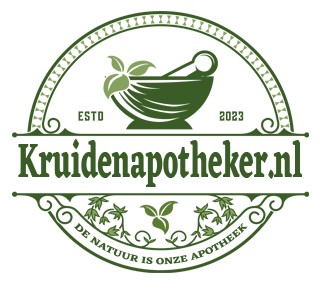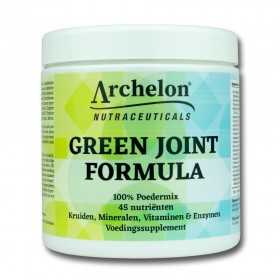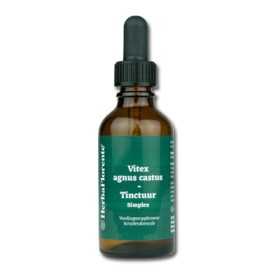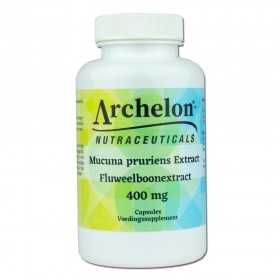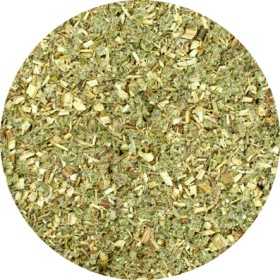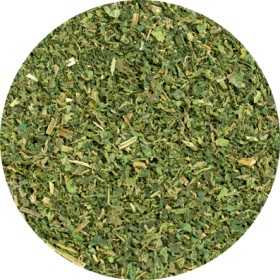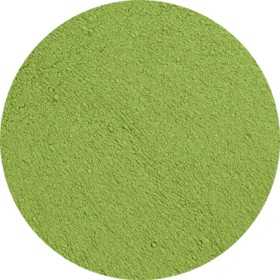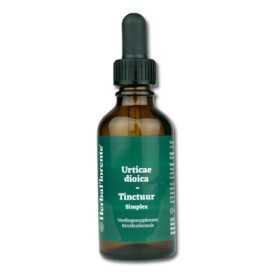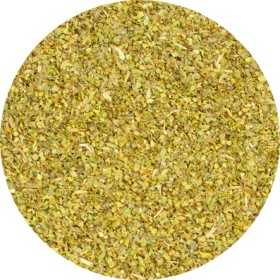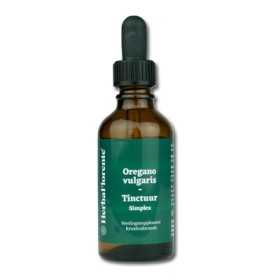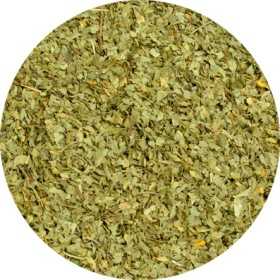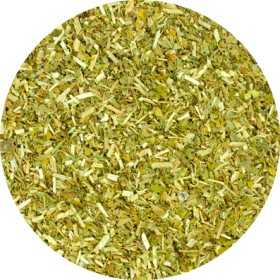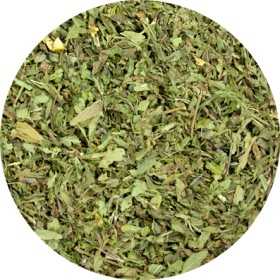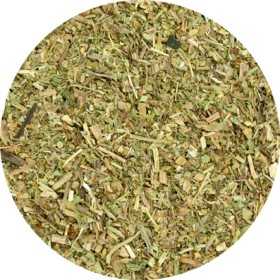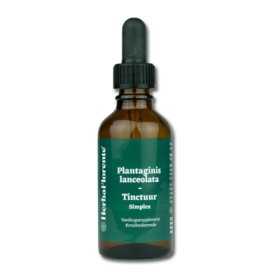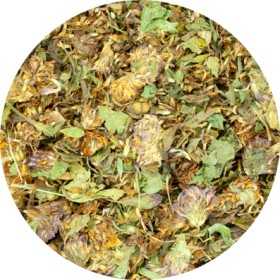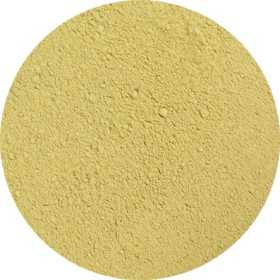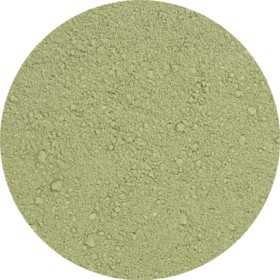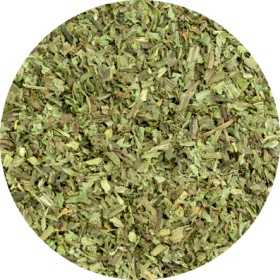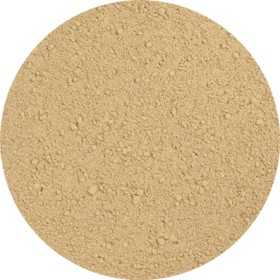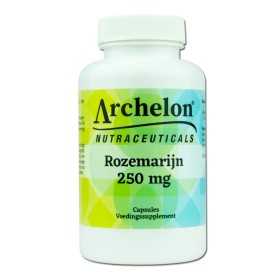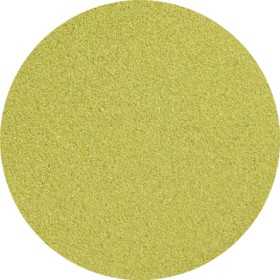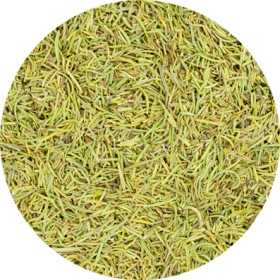Menstruation
There are 153 products.
Monk's Pepper Tincture - Vitex agnus castus Tincture
Monk's pepper (Vitex agnus castus L.) grows naturally in countries around the Mediterranean. It is known as monk's pepper or chaste tree berries and is prized as a spice in this region.
Monks who had taken a vow of chastity once used this herb to suppress their physical desires, due to its supposed dampening effect on libido. This explains the Dutch name monk's pepper.
Nowadays, Vitex agnus is especially popular among women who want to support their hormonal system around menstruation or menopause. It can relieve discomfort during menstruation and also helps with menopausal symptoms such as hot flashes, mood swings and irritability. Moreover, vitex agnus contributes to a good mental balance.
Monks who had taken a vow of chastity once used this herb to suppress their physical desires, due to its supposed dampening effect on libido. This explains the Dutch name monk's pepper.
Nowadays, Vitex agnus is especially popular among women who want to support their hormonal system around menstruation or menopause. It can relieve discomfort during menstruation and also helps with menopausal symptoms such as hot flashes, mood swings and irritability. Moreover, vitex agnus contributes to a good mental balance.
€9.95
Mucuna pruriens Extract - Velvet Bean Extract - 400 mg
Mucuna pruriens, also known as the velvet bean, has been an essential part of traditional Ayurvedic medicine in India for thousands of years. This special plant not only supports the nervous system and helps maintain emotional balance, but is also a natural aid for both men and women for libido. In addition, Mucuna pruriens contributes to a healthy menstrual cycle and supports normal testosterone levels. With its powerful antioxidants, it also strengthens the immune system.
The Mucuna pruriens capsules are completely plant-based and therefore suitable for vegetarians and vegans. Discover the ancient Ayurvedic secrets and experience the powerful benefits of this unique bean for yourself!
The Mucuna pruriens capsules are completely plant-based and therefore suitable for vegetarians and vegans. Discover the ancient Ayurvedic secrets and experience the powerful benefits of this unique bean for yourself!
€29.95
Mugwort - Artemisiae vulgaris - Cut
The mugwort (Artemisia vulgaris) is a plant from the composite family (Asteraceae), related to wormwood. This weakly aromatic plant has leaves that have white felt-like hairs on the underside. Mugwort is widespread in Belgium and the Netherlands, often found on wasteland and along roads. The plant thrives best in sandy soil. The stem is 60–120 cm long and often shows a reddish color.
In ancient times, the Romans put mugwort in their footwear to relieve fatigue and pain. In central Mongolia, where the population used to suffer from clouds of large mosquitoes (the size of small shrimps), the Mongolian mugwort (with its characteristic bluish, hairy, succulent leaves) was used to repel these mosquitoes in the damp lawns.
In ancient times, the Romans put mugwort in their footwear to relieve fatigue and pain. In central Mongolia, where the population used to suffer from clouds of large mosquitoes (the size of small shrimps), the Mongolian mugwort (with its characteristic bluish, hairy, succulent leaves) was used to repel these mosquitoes in the damp lawns.
€2.00
From: €2.00
Nettle (Herb) - Urticae dioica
The nettle (Urtica dioica) is a powerful and versatile plant that occurs in many places, despite its irritating property to the touch. Known for its culinary uses, such as nettle soup and tea, the nettle is also known for its health benefits.
Nettle leaf is a traditional herbal medicine with various applications. It contributes to healthy skin, gives shine to the hair and strengthens the nails. In addition, it can help soothe the respiratory tract and maintain proper fluid balance. It also provides support to the heart and blood vessels.
Nettle leaf is a traditional herbal medicine with various applications. It contributes to healthy skin, gives shine to the hair and strengthens the nails. In addition, it can help soothe the respiratory tract and maintain proper fluid balance. It also provides support to the heart and blood vessels.
€2.00
From: €2.00
Nettle - 380 mg
The nettle (Urtica dioica) is a powerful and versatile plant that occurs in many places, despite its irritating property to the touch. Known for its culinary uses, such as nettle soup and tea, the nettle is also known for its health benefits.
Originally from Africa and Asia, the plant goes by the Latin name Urtica dioica and has been used for centuries. In herbalism, not only the dried leaves, but also the dried roots are used.
Nettle leaf is a traditional herbal medicine with various applications. It contributes to healthy skin, gives shine to the hair and strengthens the nails. In addition, it can help soothe the respiratory tract and maintain proper fluid balance. It also provides support to the heart and blood vessels.
Originally from Africa and Asia, the plant goes by the Latin name Urtica dioica and has been used for centuries. In herbalism, not only the dried leaves, but also the dried roots are used.
Nettle leaf is a traditional herbal medicine with various applications. It contributes to healthy skin, gives shine to the hair and strengthens the nails. In addition, it can help soothe the respiratory tract and maintain proper fluid balance. It also provides support to the heart and blood vessels.
€17.95
Nettle - Urticae dioica
The nettle (Urtica dioica) is a powerful and versatile plant that occurs in many places, despite its irritating property to the touch. Known for its culinary uses, such as nettle soup and tea, the nettle is also known for its health benefits.
Nettle leaf is a traditional herbal medicine with various applications. It contributes to healthy skin, gives shine to the hair and strengthens the nails. In addition, it can help soothe the respiratory tract and maintain proper fluid balance. It also provides support to the heart and blood vessels.
Nettle leaf is a traditional herbal medicine with various applications. It contributes to healthy skin, gives shine to the hair and strengthens the nails. In addition, it can help soothe the respiratory tract and maintain proper fluid balance. It also provides support to the heart and blood vessels.
€2.40
From: €2.40
Nettle Tincture - Urticae dioica Tincture
Single herbal tincture made with dried herb of Urticae dioica (Nettle).
The nettle (Urtica dioica) is a powerful and versatile plant that occurs in many places, despite its irritating property to the touch. Known for its culinary uses, such as nettle soup and tea, the nettle is also known for its health benefits.
Nettle leaf is a traditional herbal medicine with various applications. It contributes to healthy skin, gives shine to the hair and strengthens the nails. In addition, it can help soothe the respiratory tract and maintain proper fluid balance. It also provides support to the heart and blood vessels.
The nettle (Urtica dioica) is a powerful and versatile plant that occurs in many places, despite its irritating property to the touch. Known for its culinary uses, such as nettle soup and tea, the nettle is also known for its health benefits.
Nettle leaf is a traditional herbal medicine with various applications. It contributes to healthy skin, gives shine to the hair and strengthens the nails. In addition, it can help soothe the respiratory tract and maintain proper fluid balance. It also provides support to the heart and blood vessels.
€10.95
Olibanum Idian - Boswelia serrata
Olibanum Idian (Boswellia serrata) is a medium to large deciduous tree with a slightly open crown and branches that hang slightly. This tree belongs to the Burseraceae family and is native to India and the Punjab area.
Olibanum Idian is extracted from the resin of the tree. Extracts of Boswellia serrata have been clinically studied for osteoarthritis and joint pain, showing a slight improvement in pain and function. In traditional Ayurveda it is used for diabetes.
Boswellia serrata produces several forms of boswellic acids, such as β-boswellic acid, acetyl-β-boswellic acid, 11-keto-β-boswellic acid and acetyl-11-keto-β-boswellic acid.
Olibanum Idian is extracted from the resin of the tree. Extracts of Boswellia serrata have been clinically studied for osteoarthritis and joint pain, showing a slight improvement in pain and function. In traditional Ayurveda it is used for diabetes.
Boswellia serrata produces several forms of boswellic acids, such as β-boswellic acid, acetyl-β-boswellic acid, 11-keto-β-boswellic acid and acetyl-11-keto-β-boswellic acid.
€2.60
From: €2.60
Oregano - Origani vulgaris
Oregano (Origanum vulgare) also known as wild marjoram, is a special herb that has been used for thousands of years for its beneficial properties. It supports healthy intestinal flora and promotes digestion. In addition, oregano has benefits for the heart, blood vessels and blood pressure.
The herb belongs to the Lamiaceae family, which also includes rosemary, thyme and mint. Oreganois is particularly rich in carvacrol, which gives it its characteristic spicy and slightly bitter taste. The most vigorous form of oregano grows in Mediterranean mountain areas, thriving on calcareous soil. During the spring, wild oregano blooms and residents go into the mountains to collect these aromatic herbs.
The herb belongs to the Lamiaceae family, which also includes rosemary, thyme and mint. Oreganois is particularly rich in carvacrol, which gives it its characteristic spicy and slightly bitter taste. The most vigorous form of oregano grows in Mediterranean mountain areas, thriving on calcareous soil. During the spring, wild oregano blooms and residents go into the mountains to collect these aromatic herbs.
€2.80
From: €2.80
Oregano Tincture - Oregano vulgaris Tincture
Single herbal tincture made with dried herb of Oregano vulgaris (Oregano).
Oregano (Origanum vulgare) also known as wild marjoram, is a special herb that has been used for thousands of years for its beneficial properties. It supports healthy intestinal flora and promotes digestion. In addition, oregano has benefits for the heart, blood vessels and blood pressure.
Oregano (Origanum vulgare) also known as wild marjoram, is a special herb that has been used for thousands of years for its beneficial properties. It supports healthy intestinal flora and promotes digestion. In addition, oregano has benefits for the heart, blood vessels and blood pressure.
€10.95
Parsley - Petroselini - Cut
Parsley (Petroselinum crispum) is a biennial, winter-hardy herbaceous plant belonging to the lacecap family (Apiaceae). It is used extensively in European, American and Middle Eastern cuisine for its fresh taste.
To the ancient Greeks, parsley symbolized joy and was used together with marjoram as a hangover remedy. The Romans spread the use of this herb throughout Western Europe. In the Middle Ages, parsley served as a vegetable and was grown, among other things, in the imperial gardens of Charlemagne.
Adding parsley (usually the leaves) to dishes is best done just before serving. It is often combined with garlic in butter to make herb butter and can also be used in salads. Ground parsley seeds serve as a spice.
To the ancient Greeks, parsley symbolized joy and was used together with marjoram as a hangover remedy. The Romans spread the use of this herb throughout Western Europe. In the Middle Ages, parsley served as a vegetable and was grown, among other things, in the imperial gardens of Charlemagne.
Adding parsley (usually the leaves) to dishes is best done just before serving. It is often combined with garlic in butter to make herb butter and can also be used in salads. Ground parsley seeds serve as a spice.
€2.20
From: €2.20
Passionflower - Passiflora incarnata
Passionflower (Passiflora incarnata) is known as a traditional herb that has long been used to reduce stress and inner turmoil. Native people of Central and North America used various parts of the plant to relax and sleep better. It is a natural sedative.
Although the blue passion flower originally only grew in America, it can now be found almost everywhere. The flowers of the Passiflora incarnata are not only beautiful to look at, but also edible. In the fall, passion fruits grow and the leaves are also edible. These leaves are rich in tannins, flavanols, saponins, choline and magnesium.
Although the blue passion flower originally only grew in America, it can now be found almost everywhere. The flowers of the Passiflora incarnata are not only beautiful to look at, but also edible. In the fall, passion fruits grow and the leaves are also edible. These leaves are rich in tannins, flavanols, saponins, choline and magnesium.
€2.40
From: €2.40
Peppermint - Menthae piperita
Peppermint (Mentha piperita) is often taken to support digestion. Peppermint is a member of the Lamiaceae family and is used for making peppermint candy.
In herbal medicine, peppermint has a long history dating back to ancient Greece. There, the fragrant peppermint leaf was traditionally used to aid digestion. Peppermint contains several essential oils, including menthol, menthone and cineole.
Peppermint originated from a cross between water mint (Mentha aquatica) and spike mint (Mentha spicata). In the seventeenth century, this plant was discovered in England in a field with mint plants.
In herbal medicine, peppermint has a long history dating back to ancient Greece. There, the fragrant peppermint leaf was traditionally used to aid digestion. Peppermint contains several essential oils, including menthol, menthone and cineole.
Peppermint originated from a cross between water mint (Mentha aquatica) and spike mint (Mentha spicata). In the seventeenth century, this plant was discovered in England in a field with mint plants.
€2.00
From: €2.00
Plantain Broadleaf - Plantaginis major
The Plantain Broadleaf (Plantago major) is a plant belonging to the plantain family (Plantaginaceae) and varies in size from 10 to 50 cm. It forms a dense leaf rosette that is resistant to foot traffic, which is why it is often considered a weed. This plant species is common in gardens, along roads and paths, and is sometimes derisively called the "white man's footprint". Nevertheless, there is a cultivated variety known as Plantago major 'Rosularis'.
€2.00
From: €2.00
Plantain Narrow Tincture - Plantago lanceolata Tincture
Single herbal tincture made with dried herb of Plantaginis (Plantago) lanceolata (Plantain Narrow).
Narrow plantain (Plantago lanceolata) is a native plant that thrives in Europe, parts of Asia, North Africa and North America. The young leaves of this plant contain a rich mix of beneficial substances, including mucilages, tannins, bitter substances, flavonoids and minerals such as potassium and zinc. Best known for its soothing effect on the throat thanks to its mucilages, plantain also provides support for the immune system and promotes normal intestinal function. In addition, it can help maintain flexible joints and is beneficial for the liver.
Narrow plantain (Plantago lanceolata) is a native plant that thrives in Europe, parts of Asia, North Africa and North America. The young leaves of this plant contain a rich mix of beneficial substances, including mucilages, tannins, bitter substances, flavonoids and minerals such as potassium and zinc. Best known for its soothing effect on the throat thanks to its mucilages, plantain also provides support for the immune system and promotes normal intestinal function. In addition, it can help maintain flexible joints and is beneficial for the liver.
€9.95
Red Clover (Flower) - Trifolii Rubr. pratense - Whole
Red clover (Trifolium pratense) grows naturally in Europe and Central Asia. Usually the leaves of red clover have three parts and a light purple flower blooms in the middle. In addition to the high content of isoflavones, which are bioactive substances that fall under polyphenols, the flower heads of red clover are also rich in vitamin C, B1, B2, B3, beta-carotene and choline.
Red clover can help with menopausal symptoms such as hot flashes, mood swings and irritability. In addition, it supports heart health and contributes to the condition of the blood vessels. It can also be used to maintain strong bones.
Red clover can help with menopausal symptoms such as hot flashes, mood swings and irritability. In addition, it supports heart health and contributes to the condition of the blood vessels. It can also be used to maintain strong bones.
€2.80
From: €2.80
Red Clover - Trifolii Rubr. pratense
Red clover (Trifolium pratense) grows naturally in Europe and Central Asia. Usually the leaves of red clover have three parts and a light purple flower blooms in the middle. In addition to the high content of isoflavones, which are bioactive substances that fall under polyphenols, the flower heads of red clover are also rich in vitamin C, B1, B2, B3, beta-carotene and choline.
Red clover can help with menopausal symptoms such as hot flashes, mood swings and irritability. In addition, it supports heart health and contributes to the condition of the blood vessels. It can also be used to maintain strong bones.
Red clover can help with menopausal symptoms such as hot flashes, mood swings and irritability. In addition, it supports heart health and contributes to the condition of the blood vessels. It can also be used to maintain strong bones.
€3.20
From: €3.20
Ribwort Plantain - Plantaginis lanceolata
Ribwort Plantain (Plantago lanceolata) is a native plant that thrives in Europe, parts of Asia, North Africa and North America. The young leaves of this plant contain a rich mix of beneficial substances, including mucilages, tannins, bitter substances, flavonoids and minerals such as potassium and zinc. Best known for its soothing effect on the throat thanks to its mucilages, plantain also provides support for the immune system and promotes normal intestinal function. In addition, it can help maintain flexible joints and is beneficial for the liver.
€2.40
From: €2.40
Ribwort Plantain - Plantaginis lanceolata - Cut
Narrow plantain (Plantago lanceolata) is a native plant that thrives in Europe, parts of Asia, North Africa and North America. The young leaves of this plant contain a rich mix of beneficial substances, including mucilages, tannins, bitter substances, flavonoids and minerals such as potassium and zinc. Best known for its soothing effect on the throat thanks to its mucilages, plantain also provides support for the immune system and promotes normal intestinal function. In addition, it can help maintain flexible joints and is beneficial for the liver.
€2.00
From: €2.00
Rose - Rosae damascena
Rosae damascena, also known as the damask rose, is a versatile flower with many names, including the Iranian rose, Bulgarian rose, Taif rose, Ispahan rose and Castile rose.
These flowers are known for their delicate fragrance and are grown commercially for rose oil, both "rose otto" and "rose absolute", which is widely used in perfumery. They are also used to make rose water and "rose concrete". The petals are even edible and are used to flavor dishes, as a garnish, to make herbal tea and to preserve gulkand in sugar. Moreover, the damask rose is the national flower of Iran.
These flowers are known for their delicate fragrance and are grown commercially for rose oil, both "rose otto" and "rose absolute", which is widely used in perfumery. They are also used to make rose water and "rose concrete". The petals are even edible and are used to flavor dishes, as a garnish, to make herbal tea and to preserve gulkand in sugar. Moreover, the damask rose is the national flower of Iran.
€12.50
From: €12.50
Rose Root - Rhodiola rosea
Out-of-Stock
Rose root (Rhodiola rosea) also known as the 'golden root', is a succulent plant that thrives in cold, rocky areas around the world. The roots emit a characteristic scent of roses. This herb has long been used in herbal medicine.
It contains protective antioxidants that help our body cells. Rose root supports both physical and mental balance in our body. It helps keep the mind clear, improves mood and promotes concentration. Some of the bioactive compounds in rose root include rosavine and salidroside, which are thought to be responsible for Rhodiola rosea's calming and uplifting effects.
It contains protective antioxidants that help our body cells. Rose root supports both physical and mental balance in our body. It helps keep the mind clear, improves mood and promotes concentration. Some of the bioactive compounds in rose root include rosavine and salidroside, which are thought to be responsible for Rhodiola rosea's calming and uplifting effects.
€20.00
From: €20.00
Rosemary - 250 mg
Rosemary (Rosmarinus officinalis L.) is a fragrant, compact shrub belonging to the Lamiaceae family. This versatile herb has been used for centuries for various purposes, both culinary and for health promotion. Originally from Mediterranean regions, the Rosmarinus officinalis displays lush blooms in spring with small, lavender blue flowers.
The name "rosemary" has its origins in the Latin "ros" (roris), meaning "dew", and "marinus", meaning "sea": "dew of the sea". Since ancient times, by both the ancient Greeks and Romans, Rosmarinus officinalis has been valued for its health-supporting properties. It helps with digestion, strengthens the immune system and contains antioxidants.
The name "rosemary" has its origins in the Latin "ros" (roris), meaning "dew", and "marinus", meaning "sea": "dew of the sea". Since ancient times, by both the ancient Greeks and Romans, Rosmarinus officinalis has been valued for its health-supporting properties. It helps with digestion, strengthens the immune system and contains antioxidants.
€19.95
Rosemary - Rosmarini officinalis
Rosemary (Rosmarinus officinalis L.) is a fragrant, compact shrub belonging to the Lamiaceae family. This versatile herb has been used for centuries for various purposes, both culinary and for health promotion. Originally from Mediterranean regions, the Rosmarinus officinalis displays lush blooms in spring with small, lavender blue flowers.
The name "rosemary" has its origins in the Latin "ros" (roris), meaning "dew", and "marinus", meaning "sea": "dew of the sea". Since ancient times, by both the ancient Greeks and Romans, Rosmarinus officinalis has been valued for its health-supporting properties. It helps with digestion, strengthens the immune system and contains antioxidants.
The name "rosemary" has its origins in the Latin "ros" (roris), meaning "dew", and "marinus", meaning "sea": "dew of the sea". Since ancient times, by both the ancient Greeks and Romans, Rosmarinus officinalis has been valued for its health-supporting properties. It helps with digestion, strengthens the immune system and contains antioxidants.
€2.00
From: €2.00
Rosemary - Rosmarini officinalis - Cut
Rosemary (Rosmarinus officinalis L.) is a fragrant, compact shrub belonging to the Lamiaceae family. This versatile herb has been used for centuries for various purposes, both culinary and for health promotion. Originally from Mediterranean regions, the Rosmarinus officinalis displays lush blooms in spring with small, lavender blue flowers.
The name "rosemary" has its origins in the Latin "ros" (roris), meaning "dew", and "marinus", meaning "sea": "dew of the sea". Since ancient times, by both the ancient Greeks and Romans, Rosmarinus officinalis has been valued for its health-supporting properties. It helps with digestion, strengthens the immune system and contains antioxidants.
The name "rosemary" has its origins in the Latin "ros" (roris), meaning "dew", and "marinus", meaning "sea": "dew of the sea". Since ancient times, by both the ancient Greeks and Romans, Rosmarinus officinalis has been valued for its health-supporting properties. It helps with digestion, strengthens the immune system and contains antioxidants.
€2.00
From: €2.00
